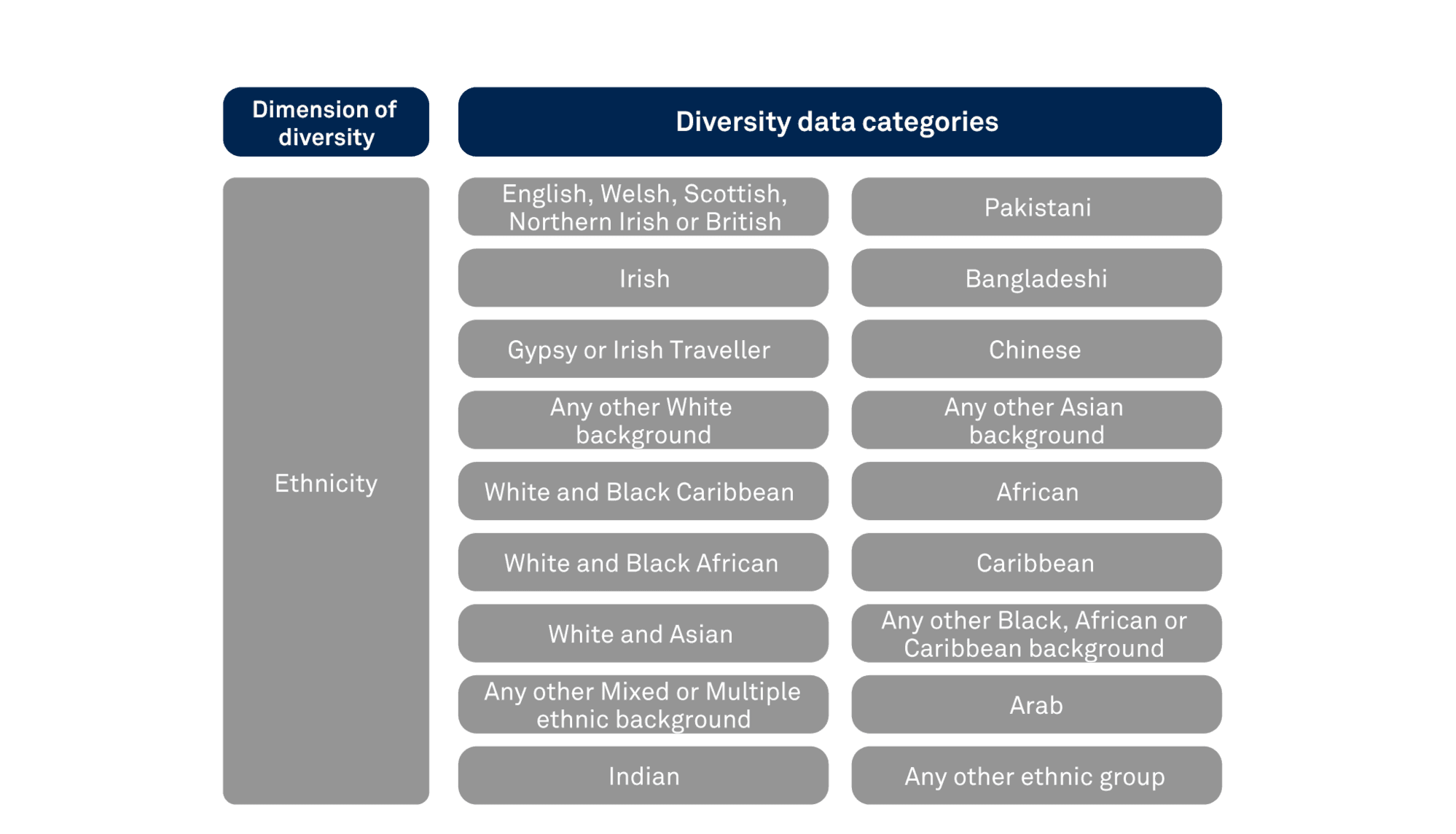Dimensions of diversity
As part of the scoping process, it is important to be clear on which diversity data points (referred to here as dimensions of diversity) are going to be collected. Most organisations will already have data on sex (but not necessarily gender identity) and age, as this is usually collected from employees on joining. However, other dimensions of data will likely need to be identified. Identifying which dimensions to collect will be an individual organisation’s decision, but will often include consideration of:
- Data required to meet D&I goals and overall strategy;
- External data requirements (e.g. under local reporting requirements / requests from clients);
- Legal permissions and restrictions;
- Local cultural considerations; and
- Market practice.
Globally, this can become more complex as local law may prevent the collection of data on some dimensions, while local market practice and cultural considerations will also vary.
Diversity data categories
Once the relevant dimensions have been identified, it is important to then think carefully about the way questions will be asked and the options provided for answering each question (referred to here as diversity data categories). Organisations should seek a reputable local source to determine the categories and question wording where this exists. Where possible, a national government census can provide a good initial source, which may then be supplemented by best practice guidance from specialist groups where organisations wish to collect more granular data, or data not within the census. Using any census or government source will also make benchmarking against any central demographic data easier. In the UK, market practice is to use the UK Census as an initial source for diversity data questions and categories, particularly as these questions have recently been reviewed for the 2021 census.
It is important for global organisations to note the complexities involved in categorising diversity data globally as often there is no ‘one size fits all’ approach. You must ensure that

Example diversity dimension - Ethnicity categories in the UK (source: PwC)